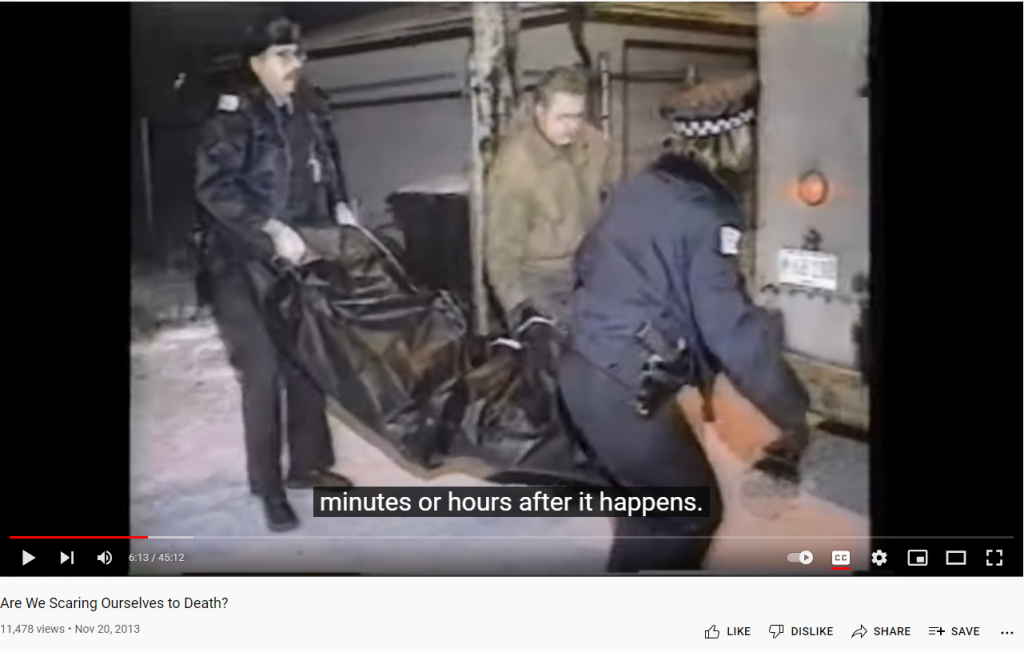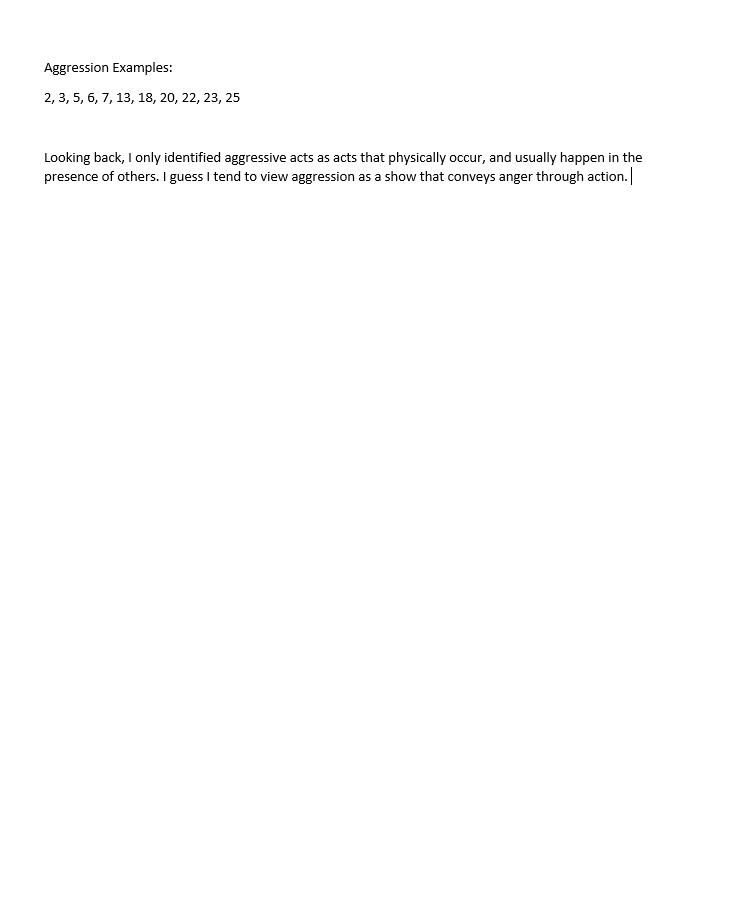Top Artifact One:

The artifact that helped me understand the main concept of a module was this video: “Are We Scaring Ourselves to Death?” from Module 4. I liked this artifact the best because I thought it was the perfect real-life example of how heuristics affect us, even when we aren’t aware of how they are affecting us. The video shows how media skews our ideas of crime and other tragic world events, which in turn makes us think that the world is in worse shape than it actually is. The availability heuristic provided by media makes us think that crime is continually rising because of how much it is covered on the news, despite crime actually not being on the rise.
This artifact helped me make connections from the heuristic topic in Module 4 to real life by providing these many examples of how a heuristic is made along with how it affects people in their day to day lives. This connection helped me understand the topic of heuristics better by giving me an example of a heuristic that I had fallen prey to that I wasn’t even aware of. This video also expanded my perspective of the topic by showing me that there are many kinds of heuristics that many people fall prey to that they also aren’t aware of. The image I chose shows an image from the news of an all too familiar scene: news stations covering crimes with graphic videos that instill fear into viewers, which makes them think they are in more danger than they are realistically in. This shows how images like this pop up into peoples’ heads when they think of crime rates, making them think that crime is more prevalent than it actually is, which is a great example of an availability heuristic.
Top Artifact #2
My second artifact is from the attitude quiz in Module 7. My friend and I took the quiz together and not only noticed that we had similar answers to the questions, but also noticed that our answers to the attitude questions lined up almost identically with the answers to the behavior questions. This helped me understand how our attitude helps dictate our behavior, as the quiz helped me visualize the connection. Whenever we had our answers 1-2 we usually answered no and when our answers were 3-4 we usually answered yes. The only times we didn’t answer were when the questions didn’t line up with the questions well or if we had legitimate reasons for not following our attitudes. Well, all of them besides the workout one, I plan to get back to working out but I’m just waiting for summer, so there’s not really much of an excuse.
However, this artifact actually helped me realize how I operationalize my dissonance and it’s basically just that I usually like to tell myself that the situation makes me not able to follow my beliefs. For example, there is nothing stopping me from working out, and I still think that working out is healthy. However, whenever anyone asks me to workout with them or when they ask me why I don’t workout I always say that I don’t want to workout in a public gym. This is usually just me making excuses for my laziness but this artifact helped me realize that I experience dissonance more commonly than I previously thought.
I liked this artifact because it was pretty interactive and made me realize something about myself that I usually don’t think about very often, opening my eyes to my prior actions and thoughts. This helped me relate to the topic really well and helped me remember the subject.
Top Artifact #3

This artifact of the aggression questionnaire from Module 12 was my top artifact simply because it shocked me in how little I elaborated on the topic of aggression in my head prior to this activity. Before this questionnaire I had previously only thought of aggression as behavior that was angry and threatening. This questionnaire expanded my thought on aggression though, as I originally thought of many of these as aggression. The questionnaire mentioned many instances where it would simply be someone planning something aggressive and at first thought I would have said it was aggressive behavior but after analyzing it I no longer thought of it that way. The answers that I selected seemed to be mostly physical examples, which made me reevaluate the idea of aggression in my head.
The artifact forced me to rethink my ideas on aggression and expanded my ideas on the topic because it made me realign my beliefs in a way that lined up with Freud. Freud’s obsession with primal instincts in their relation to psychology makes me think that maybe my ideas on aggression are innate and are built into me by genetics. However, it also made me look at the aggression module as a whole differently because it made me keep my own ideas on the chapter in my mind when rereading through it and it felt different a second time around. This applied mainly to the perspectives of aggression chapter, but lingered through the other parts. I feel like the biological factor of aggression is the key component that really makes aggression happen and makes it have the effect that it has.